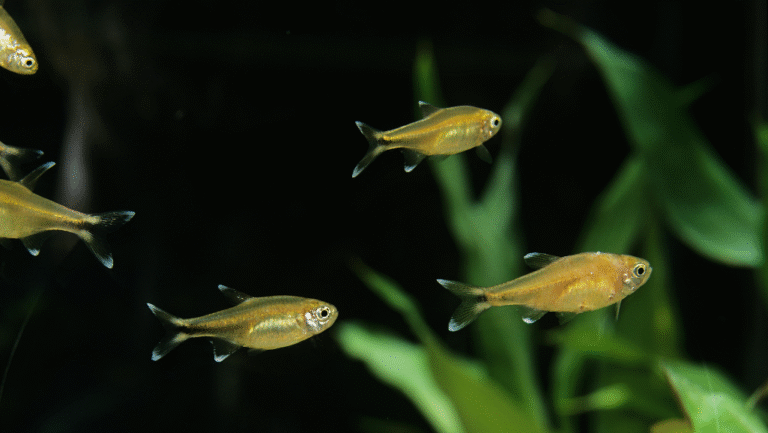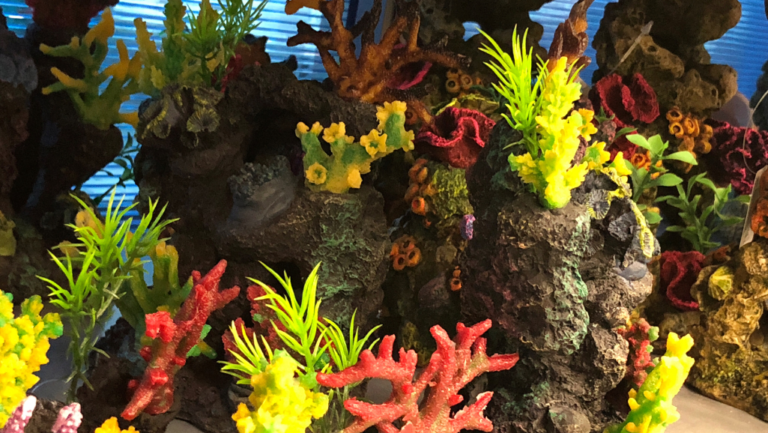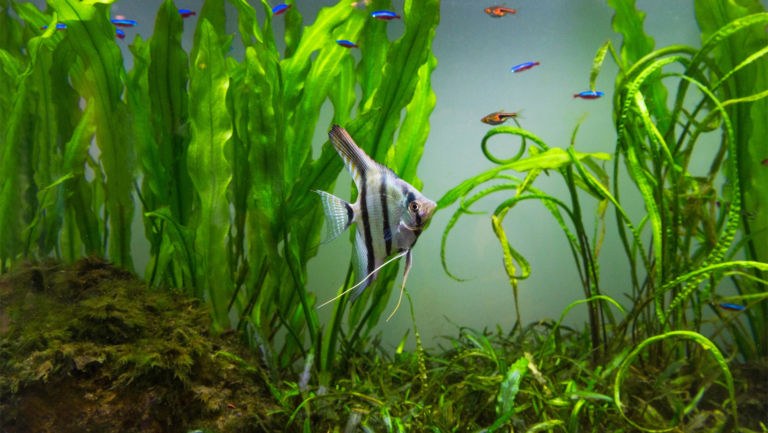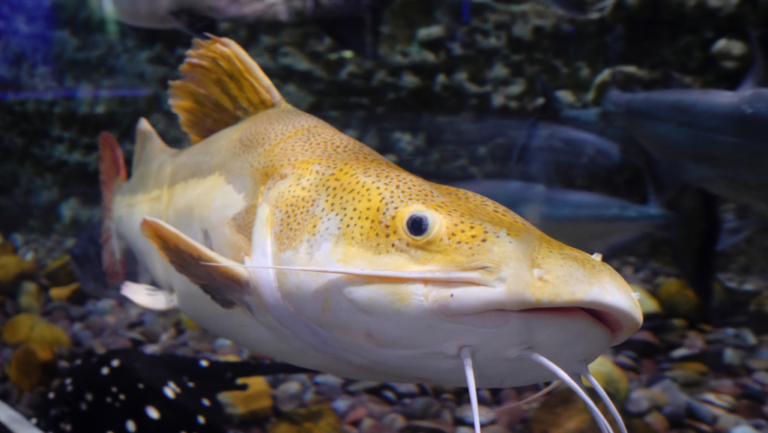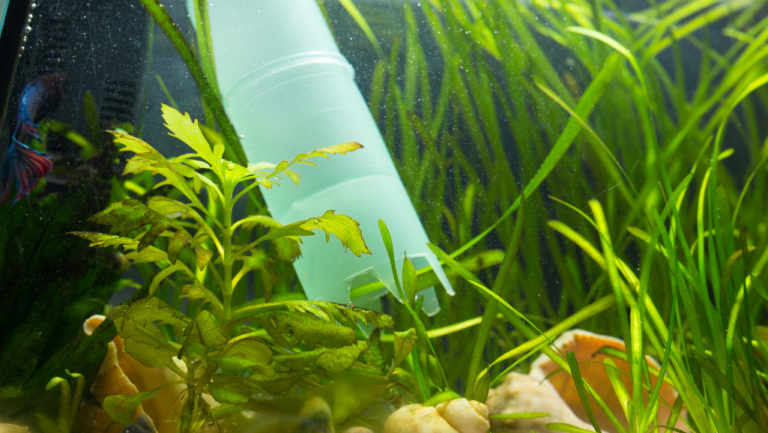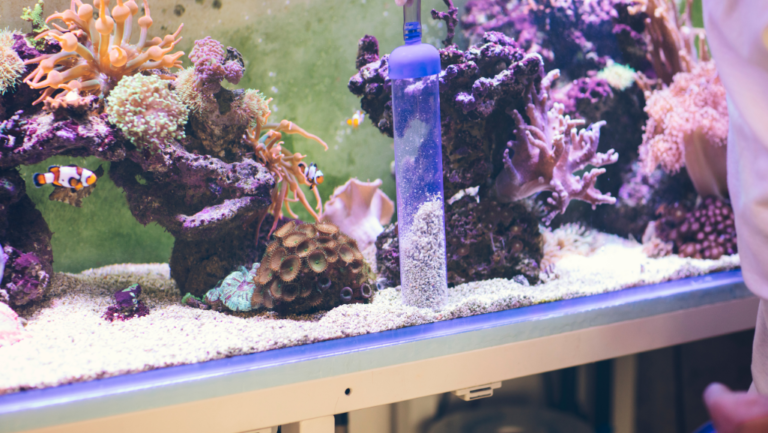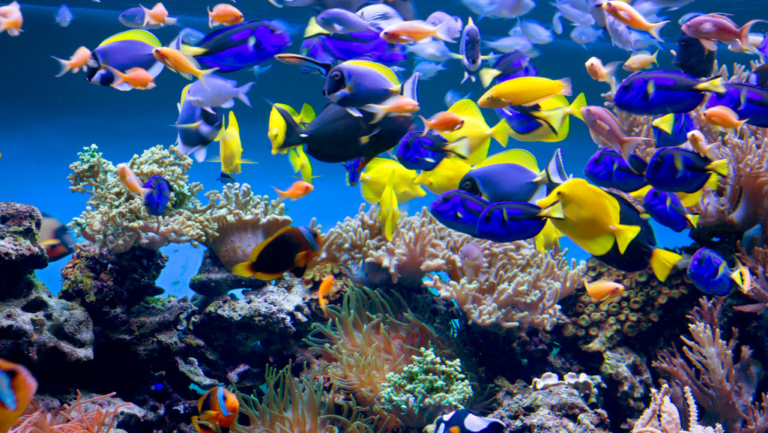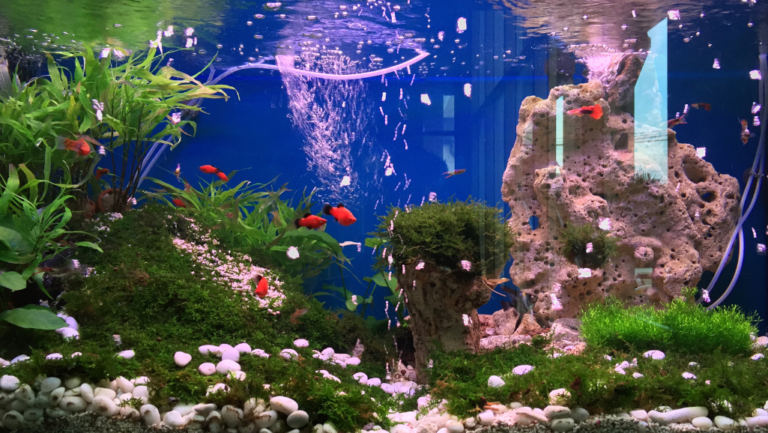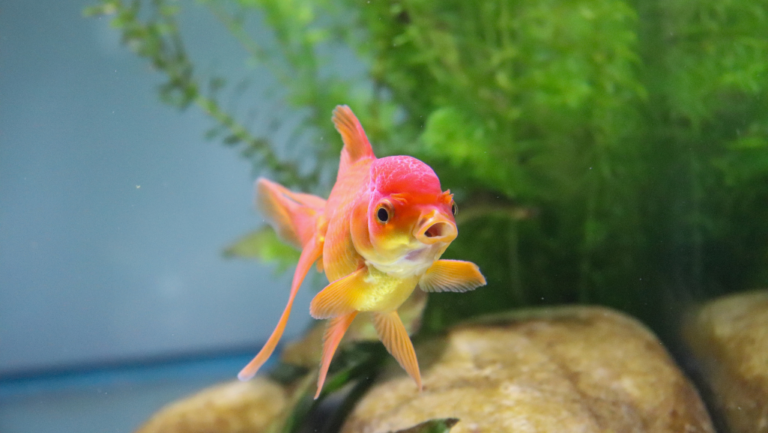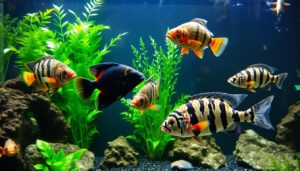Exploring the world of big freshwater aquarium fish opens up a vast and wondrous realm of underwater giants. Whether you’re a seasoned aquarist or new to large freshwater aquarium fish, knowing the right care tips is crucial. It’s important to pick the right species and ensure they have enough space to thrive. This guide will help you create a healthy and vibrant home for your aquatic friends.
Just like any pet, your fish need a habitat that mirrors their natural environment. This means focusing on their biological needs, not just the look of your tank. Understanding water chemistry, filtration, and feeding is key. Also, consider their social and spatial needs to keep your spacious tanks thriving with big freshwater aquarium fish.
Key Takeaways
- Properly cycling your aquarium, a process that takes 1-3 months, is critical to prepare a safe environment for your fish.
- Consider a minimum 20-gallon long aquarium for a starter tank to provide more options for fish and stable water conditions.
- Oversize your filtration; seek options double the size of your tank capacity to ensure pristine water quality.
- Incorporate a period of darkness for your fish, mimicking natural light cycles with up to 10 hours of light per day.
- Understand species-specific needs for tank space to prevent aggression and ensure compatibility within your aquatic community.
- Select substrate and lighting that cater not just to aesthetics but also to the well-being of your fish.
Understanding the Unique Needs of Big Freshwater Aquarium Fish
Choosing ideal large freshwater fish means looking at more than size. You must think about growth and lifespan. These aspects affect the tank’s needs, care, and how much life it can support. Knowing these needs can make your aquarium hobby better.
Goldfish can grow up to 12 inches. Oscars start small but can get up to 15 inches. They need space for health and happiness.
Different fish have different needs. Some like to swim a lot, while others prefer to stay still. Schooling fish do best in groups and need lots of space. This helps them stay healthy and happy.
| Fish Type | Initial Size | Potential Adult Size | Recommended Aquarium Size |
|---|---|---|---|
| Goldfish | 1 inch | 12 inches | 29 gallons or more |
| Oscar | 2 inches | 12-15 inches | 50 gallons or more |
| Schooling Fish | Varies | Depends on Species | 30 gallons or more |
Choosing the right tank size and fish group helps avoid health problems. Issues like stress and weak immune systems can happen in small spaces. Good equipment, like strong filters and heaters, keeps the water clean and healthy for freshwater tank fish types.
Don’t forget about the weight of the tank. Water is heavy, so big tanks need strong stands. This keeps the tank stable and safe.
In short, keeping ideal large freshwater fish is a big responsibility. You need to know about tank size, water quality, and fish needs. With the right care, these amazing fish can bring joy and excitement to your home.
Maintaining Ideal Water Conditions for Large Freshwater Aquarium Fish
Keeping large freshwater aquarium fish healthy requires careful water management and regular checks. These steps are key to creating the perfect environment for your tank’s ecosystem.
Regular Water Change Schedules
Keeping your tank’s water clean and healthy depends on a regular water change schedule. Most tanks need 15% to 25% of the water changed every one to two weeks. If your tank is very busy with fish, you might need to change the water more often.
Importance of Monitoring Water Parameters
It’s vital to test your tank’s water regularly. Testing once a month is a good rule to follow. This helps you check pH, ammonia, nitrite, nitrate, and phosphate levels. These tests let you make quick adjustments to keep your fish happy and healthy.
| Parameter | Ideal Level | Common Solutions |
|---|---|---|
| Ammonia | 0 ppm | Enhance filtration, increase aeration, add beneficial bacteria |
| Nitrite | <0.75 ppm | Clean the tank, additional aeration, use of live plants |
| Nitrate | <40 ppm | Regular water changes, live plants, control feeding |
| pH | 6.8 – 7.8 | Use driftwood, peat moss, crushed coral for adjustments |
Solutions for Managing pH, Ammonia, and Nitrate Levels
To keep pH levels right, you can use crushed coral or driftwood. These help keep pH between 6.8 and 7.8. For ammonia, increase aeration, clean the tank, and add beneficial bacteria. To keep nitrates low, use live plants and control how much food you give your fish.
Choosing the Right Aquarium Size for Your Big Freshwater Fish
Choosing the right aquarium size is key for your fish’s health. Big tanks mean better water quality and less stress. A good rule is one gallon of water per inch of fish. This is especially true for best fish for large freshwater tanks.
Big tanks also help keep water conditions stable. This is important for avoiding problems with temperature, pH, and ammonia levels. This stability is crucial for a healthy aquahttps://www.bobsfish.com/propersize.cfmtic life. There are many tank sizes to choose from, each suited for different fish needs.
| Fish Type | Minimum Tank Size | Recommended Surface Area |
|---|---|---|
| Betta Fish | 5 gallons | Not applicable |
| Guppy, Tetras | 10 gallons | Not applicable |
| Swordtail Fish | 15 gallons | Not applicable |
| Freshwater Angelfish | 20 gallons | 24 square inches per inch of fish |
| Rainbowfish, Peaceful Barbs | 30 gallons | 30 square inches per inch of fish |
| Discus Fish | 55 gallons | 55 square inches per inch of fish |
Medium tanks, 20-50 gallons, are affordable and easy to care for. Very large tanks, over 50 gallons, need strong stands and more upkeep. But they look amazing and are healthier for your fish.
Proper filtration and regular water tests are essential for your fish’s health. These steps help create a lively, healthy aquarium. It adds beauty to your space and brings nature’s wonder into your home or office.
Essential Filtration Systems for Spacious Freshwater Tanks
Setting up a large freshwater fish tank requires the right filtration systems. These systems keep the water clean and healthy for the fish. Different filters handle different cleaning tasks, but all are key to a thriving tank.
Types of Filtration: Mechanical, Biological, and Chemical
Mechanical filters remove physical debris from the tank. Regular cleaning stops waste buildup, which can harm the water. Biological filters use bacteria to break down harmful compounds. Chemical filters remove toxins and discolorations from the water.
Filtration Rate Considerations for Larger Aquatic Species
An efficient aquarium filter is crucial for large tanks. It should be able to handle double the tank’s water volume. For big fish, strong filters like the Fluval High Performance Aquarium Canister Filter are needed.
Choosing the right biofilters is key for biological filtration. This process removes harmful substances from the water. Filters like the Fluval U2 Underwater filter are reliable for large setups.
Each fish species has its own needs in a large tank. Large freshwater fish tank filters must be chosen carefully. This ensures all fish have clean, healthy water.
| Filter Model | Tank Size (gallons) | Output (gph) |
|---|---|---|
| Fluval High Performance Canister Filter FX6 | Up to 400 | 925 |
| Marineland Penguin Bio-Wheel | 50-75 | 350 |
| Fluval U2 Underwater Filter | 34-65 | Varies |
| Tetra Internal Power Filter | 4-40 | 27-170 |
Feeding and Nutrition for Big Freshwater Aquarium Fish
Feeding and nutrition are key for big freshwater aquarium fish to stay healthy and grow. Knowing what nutritional needs of large aquarium fish have helps keep your aquarium lively and healthy. This guide will show you different diets for various fish and how to feed them right.
Diet Varieties for Different Species
Each exotic freshwater fish for aquarium needs its own diet. Carnivorous fish like Oscars and Red Devil Cichlids need lots of protein. They eat flakes, small pellets, and freeze-dried foods to stay colorful and full of energy.
Herbivorous fish, like those that eat algae and plants, need constant access to these foods. Omnivores, like Pristella Tetra and Gouramis, need a mix of plant and animal foods. Brands like AquaLifeRx and Sera offer foods that meet these needs.
Feeding Schedule Optimization
Having a good feeding schedule for big freshwater fish is crucial. Adult fish should eat once a day, while young ones need more food, three to four times a day. Make sure they eat all their food in five minutes to avoid overfeeding.
Adding supplements to their diet can also help. Supplements like BioPro Plus boost their health by supporting digestion and immunity.
Think about your fish’s natural behavior and feeding times when planning meals. Nocturnal fish do best with food just before night, mimicking their natural foraging.
In short, understanding nutrition for giant freshwater aquarium fish and creating a good feeding plan is vital. It keeps your aquarium healthy and vibrant, making it a beautiful and natural space.
Decor and Enrichment for Large Freshwater Aquariums
Creating a great home for freshwater fish tank inhabitants is more than just clean water. It’s about adding decor and aquatic enrichment too. The right decor makes the tank look natural and helps fish behave normally. It also gives them places to hide.
Adding driftwood, rocks, and live plants makes the tank look good and helps it stay healthy. Live plants like Anubias and Java Fern are great for aquatic settings. They help keep the water clear and clean by filtering it.
Creating a thriving habitat with diverse aquatic enrichment avenues directly impacts the activity levels and health of colorful freshwater fish for tanks.
Adding things like submerged caves or terraces with rocks or driftwood is a good idea. It lets fish hide, explore, and play, just like in the wild. Using different substrates like fine sands and botanicals like mariposa pods makes the tank even more interesting. It’s perfect for many kinds of colorful freshwater fish for tanks.
- Increase natural behaviors and well-being of tank inhabitants
- Improve water quality by incorporating plants that filter toxins
- Provide essential hiding and resting areas with diverse structures
Adding these features makes the tank look better and improves the ecosystem. It makes the aquarium a healthier and more lively place for all freshwater fish tank inhabitants. By using enrichment and the right decor, owners can make sure their fish have a fun and good place to live.
Big Freshwater Aquarium Fish Compatibility and Social Behaviors
Creating a peaceful freshwater tank community is more than picking the right fish. It’s about knowing how different fish get along and their social habits. By learning about each fish’s personality and space needs, we can make a calm place for big fish to live together.
Understanding Territorial Needs
Big fish need to have their own space. For example, Black Ghost Knife Fish can grow up to 20 inches and need lots of hiding spots. Bichirs, growing up to 30 inches, are also territorial and need a big area to call their own.
Creating a Harmonious Aquatic Community
To make a peaceful tank, think about the size, mood, and activity level of each fish. Make sure each fish has its own space to reduce stress and fights. Adding hiding spots and plants can help keep the peace and make sure all fish get along.
- Betta fish (2-3 inches): Needs gentle friends to avoid stress.
- Glass Catfish (up to 5 inches): Loves a calm place with soft lights.
- Panda Corydoras (up to 2 inches): Does best in groups, adding to the tank’s friendliness without fights.
For big fish to live well together, it’s not just about where they live. It’s also about understanding and respecting their social ways. This way, we can create a lively yet calm underwater world.
Common Health Concerns in Big Freshwater Fish
Big freshwater fish are not just visually majestic but they also require meticulous care to maintain their health and vigor. Recognizing signs of distress and effectively managing the health of these aquatic giants is crucial for any aquarium enthusiast. This section will delve into identifying common sicknesses, understanding their symptoms, and adopting best practices for preventive care and quarantine to safeguard your aquatic pets.
Identifying Signs of Stress and Illness
Understanding the signs of illness in freshwater fish is the first step in ensuring the well-being of your aquarium inhabitants. Significant indicators include abnormal swimming behavior, changes in color or appearance, and noticeable lethargy. Specific symptoms can signify more serious health issues. For instance, labored breathing and gasping at the surface might indicate Ammonia Poisoning, often present in newly set-up tanks. Similarly, the appearance of tiny, dust-like yellow spots on fins could point to Gold Dust Disease, a condition caused by protozoan parasites.
Other critical conditions to be aware of include:
- Viral hemorrhagic septicemia which affects the internal organs, leading to symptoms like bulging eyes and erratic swimming.
- Fungal infections such as Saprolegnia, presenting as grayish-white cotton-like growths on the skin or fins.
- Bacterial infections like Aeromonas, which can cause severe issues including skin and gill ulcers.
Preventive Care and Quarantine Practices
To combat stress in aquarium fish and avert the onset of disease, preventive care in freshwater fish is essential. Establishing a quarantine tank for new or sick fish plays a pivotal role. It helps in isolating affected fish and thus prevents the spread of diseases to healthy inhabitants in the main aquarium. Monitoring water quality and regular cleaning are also fundamental to maintaining a disease-free environment.
Here’s a closer look at effective quarantine practices in aquariums:
- Set up a separate quarantine tank away from the main aquarium to house new arrivals or sick fish temporarily.
- Regularly test water parameters in the quarantine tank to ensure they match those of the main tank before transferring fish.
- Observe quarantined fish for a minimum of two weeks for any signs of illness before introducing them to the main aquarium.
Additionally, integrating proactive health management strategies like regular health checks and maintaining optimal water conditions can drastically reduce the instances of illnesses in your tank. Being vigilant and responsive to the first signs of distress can help in managing the health of your aquarium effectively, ensuring a thriving aquatic environment for your big freshwater fish.
Creating a Suitable Environment for Big Freshwater Aquarium Fish
To make a great home for big freshwater aquarium fish, focus on temperature, lighting, and aquascaping. These elements are key to keeping fish healthy and making your tank look good.
Lighting and Temperature Control
Keeping the right temperature in fish tanks is vital for healthy fish. Most big fish need water between 72–82 degrees Fahrenheit. If it’s too hot or cold, they can get sick.
Also, lighting in freshwater aquariums is important. It should match day and night to help fish eat and breed. Plus, it keeps algae from taking over, which can harm fish.
Aquascaping for Large Fish Species
Aquascaping for big freshwater fish is more than just making it look nice. It’s about making a space that feels like home. Big fish need strong plants and lots of room to move.
This setup helps fish hide and breed. It also makes them less stressed. This is good for their health.
| Feature | Importance | Considerations |
|---|---|---|
| Temperature | Essential for metabolic functions | Maintain between 72-82°F |
| Lighting | Regulates fish and plant life cycles | Simulate natural light cycles |
| Aquascaping | Provides comfort and security | Incorporate sturdy plants and ample open spaces |
By focusing on temperature, lighting, and aquascaping, we make a home that’s good for big fish. It’s healthy and looks great.
Popular Big Freshwater Fish for Tanks: Species to Consider
Choosing top big freshwater fish species for your tank is key. Knowing their needs helps create a good home for them. Fish like arowanas, oscars, and large catfish are popular for their looks and lively behavior.
Let’s look at some species that add excitement and variety to your tank. These big fish are not only interesting to watch but also need special care and space.
Exclusive Profiles on Top Big Freshwater Fish Species
Arowanas are known for their silver color and fun feeding habits. Oscars are smart and colorful, but they need a big tank to grow up to 18 inches.
Catfish, like the Red-tailed catfish, are great for cleaning the tank. They live on the bottom and help keep the tank clean.
Considering Lifespan and Growth Patterns
It’s important to know how long large freshwater fish live and how they grow. Some fish, like arowanas and oscars, can live for many years. They need a tank that can grow with them.
Choosing the right plants and rocks is important. They help create a natural look and give fish places to explore. It’s also key to pick fish that get along well together.
Keeping the water clean is crucial for the health of these big fish. Regular water tests and good filters are essential. Bad water can harm their growth and life span.
In short, think about the space and care needs of big fish before adding them to your tank. This way, you’ll have a happy and interesting aquarium.
Cleaning and Maintenance Routines for Large Freshwater Aquariums
Keeping a healthy aquarium is key, especially for large freshwater tanks. Regular cleaning and maintenance routines for spacious tanks are needed. They help the aquatic ecosystem thrive without problems.
Water quality is crucial for fish health and controlling algae. Changing 15-25% of the water weekly is important. This is more so for large tanks or those with many fish, where water balance can quickly get out of hand.
Daily tasks include checking equipment. This ensures water circulation and filtration work well. It’s also important to watch for sick fish and remove extra food to avoid decay and toxins.
- Check the water temperature daily to keep it between 74-82ºF (23-28ºC).
- Top off the tank with treated water to replace lost water from evaporation.
- Do a weekly substrate vacuum to clean the tank’s bottom.
- Test water parameters like pH, ammonia, nitrite, and nitrate levels monthly.
| Parameter | Weekly Maintenance | Monthly Checks |
|---|---|---|
| pH Level | Check consistency | Adjust using substrates if needed |
| Ammonia & Nitrites | Observe for spikes | Ensure levels are close to 0 ppm |
| Nitrates | Monitor for increased levels | Keep under 40 ppm with water changes |
| Phosphates | Control with feed quantity | Maintain below 0.2 ppm to reduce algae |
Cleaning the filtration equipment monthly is also crucial. It removes debris that could block the system. This ensures it works efficiently. Using mechanical, biological, and chemical filtration helps keep the environment clean for your fish.
Proper filtration and regular maintenance are key to keeping large freshwater tanks clean. They are essential for the aquarium’s health and beauty.
Conclusion
The art of freshwater aquarium care is as diverse and rewarding as the species in our tanks. From Neon Tetras to Goldfish, big freshwater fish choices cater to all interests. Setting up large freshwater tanks right is key, focusing on water quality, tank size, and fish compatibility.
Some fish are easier to care for, like Guppies and Platies, adding color with little effort. Others, like Siamese Algae Eaters, help keep the tank clean. But, even easy-to-care-for fish need the right conditions, especially larger ones like Goldfish.
Choosing fish like White Cloud Mountain Minnows or GloFish brings its own set of needs. Fish like Tiger Barbs and Gouramis teach us about their social lives. With proper planning, regular care, and learning, we enjoy the aquarium’s beauty and the fish’s lives.





